Toys From the ’70s That Remind Us How Life Used to Be
The 1970s was an incredible decade, filled with political intrigue, protests, human rights movements, and of course, disco. While adults of the era were distracted by the Vietnam War, the Cold War, the Watergate Scandal, and the rising energy crisis, kids had an entirely different world to explore.
While there was plenty of turmoil going on in the 70s, the adults of the era still found time to develop some incredible toys for their kids. From interactive dolls to video games and, of course, the famous Rubik’s cube, this article is filled with all the most iconic toys of the era. Whether you were a child during this epic decade or are simply interested in exploring the past, you’re sure to enjoy a delicious dose of nostalgia as you explore the pages to come.
The Cute but Controversial Easy-Bake Oven
Many people see the Easy-Bake Oven as an awful example of gender roles being forced on kids at a young age. Others see it as a simple, fun toy that allows kids to emulate what they see their parents doing in the kitchen. Regardless of your opinion, there’s no denying that these kid-safe ovens were wildly popular in the 70s.
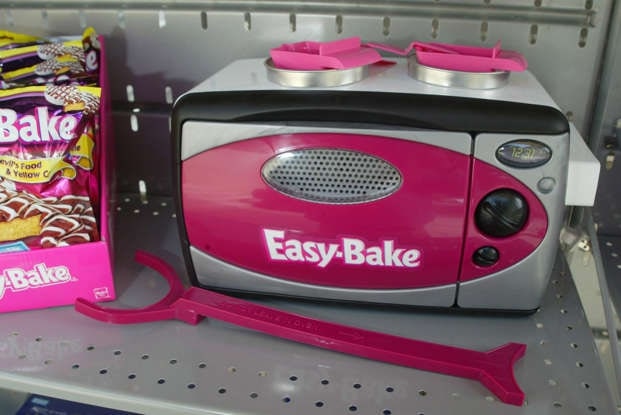
Source: mia3mom/Flickr
These mini ovens taught generations of kids to enjoy cooking, allowing them to make real, edible snacks by adding water to the “baking mix” and placing it in the oven. While the first wood-paneled version was actually released in the early 60s, the plastic variety shown above came out in the 70s.
Katie Kopycat
To anyone who wasn’t a child of the 70s, this doll is downright creepy. It honestly looks like something Stephen King would concoct in his twisted imagination. The basic gist of the thing is that it sits across from you at its little table and copies anything you write or draw on your side.
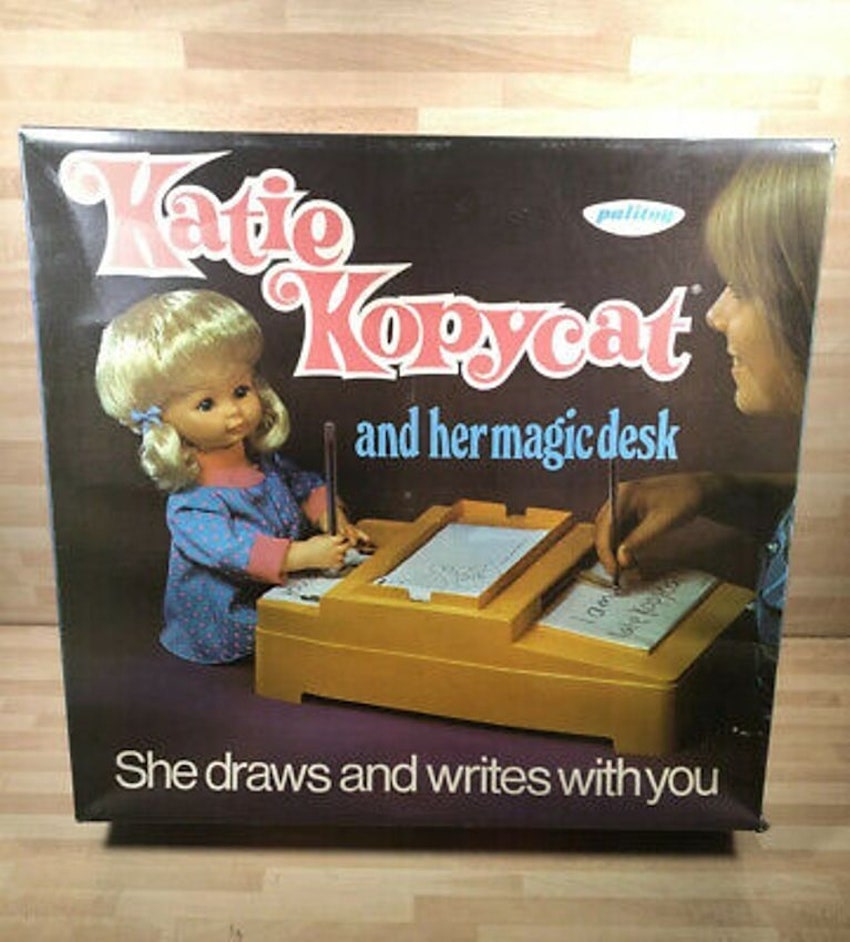
Source: yours.co.uk
Though it’s creepy as heck, these dolls now sell for eye-watering prices on the second-hand market. So, if you think you may have one lurking in your basement, now is the time to dig it out and send it off to a new home!
Micronaut Action Figures
These incredible action figures came out in 1977, and understandably, kids at the time went wild for them. Each Micronaut figurine was around 3.5 inches tall, and they featured removable parts that could be swapped around among the characters to create new configurations.
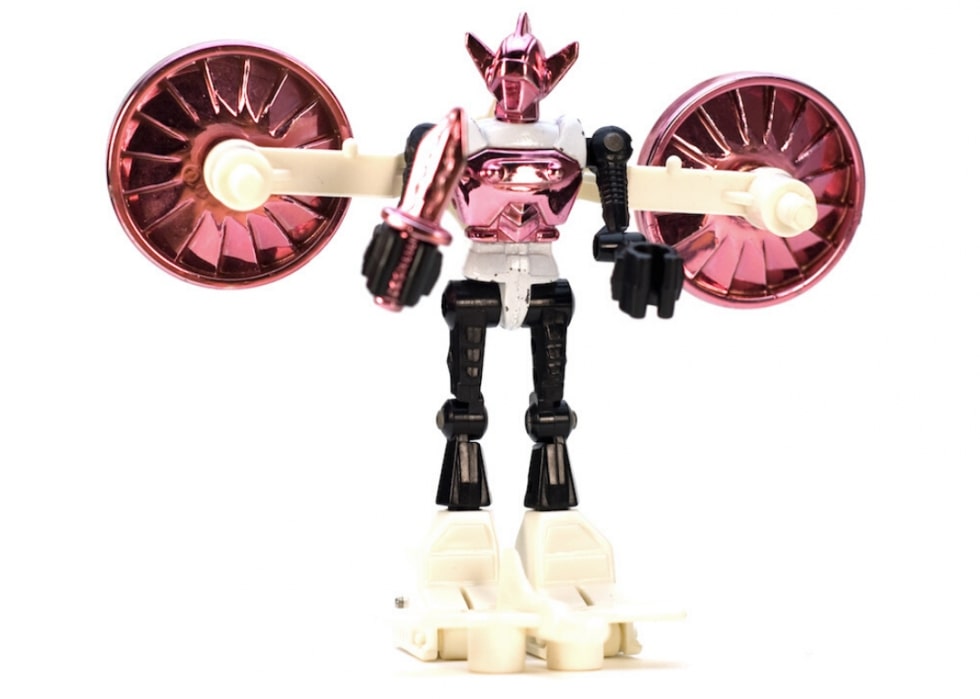
Source: Jack Szwergold/Wikimedia Commons
Marvel soon caught onto the craze, releasing a comic book series based on the Micronauts. Characters were cast as “good guys” (Force Commander, Space Glider, Time Traveler, and Galactic Defender) and “bad guys” (Baron Karza and the Acroyears).
Waterfall Ring Toss
This interactive water feature was a precursor to video games, giving 70s kids plenty of fun and frustration as they tried to get the rings onto the little spikes. All you could do to move those rings was spurt water using the button and tilt the frame.
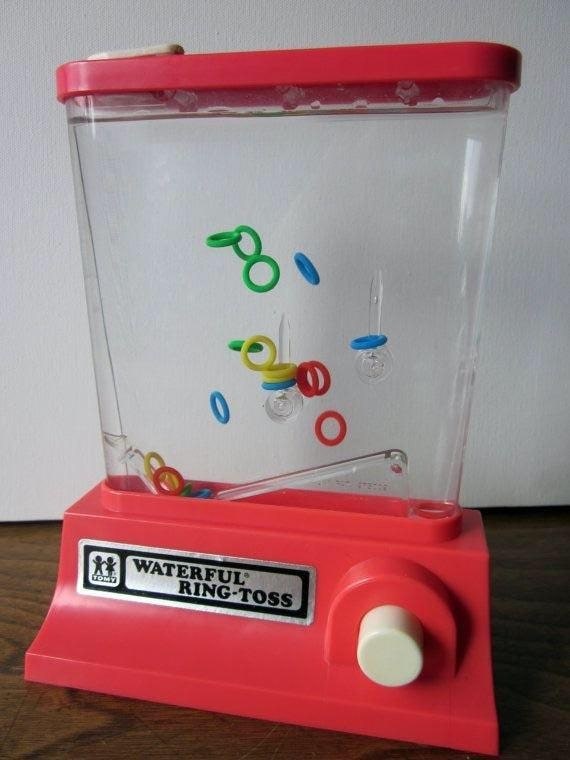
Source: TylerSGman77/Reddit
Officially known as “Wonderful Waterfall Ring Toss Game,” this simple yet captivating contraption was released in 1976. Of course, it pales in comparison to modern games like Overwatch and Call of Duty, but this was still considered fun in the late 70s.
The Weebles
If you’ve ever heard anyone say, “weeble wobble, weeble wobble, don’t fall down,” then you’ve at least tangentially heard of the Weebles. These tiny egg-shaped characters were all the rage throughout the 70s after being released in 1969.
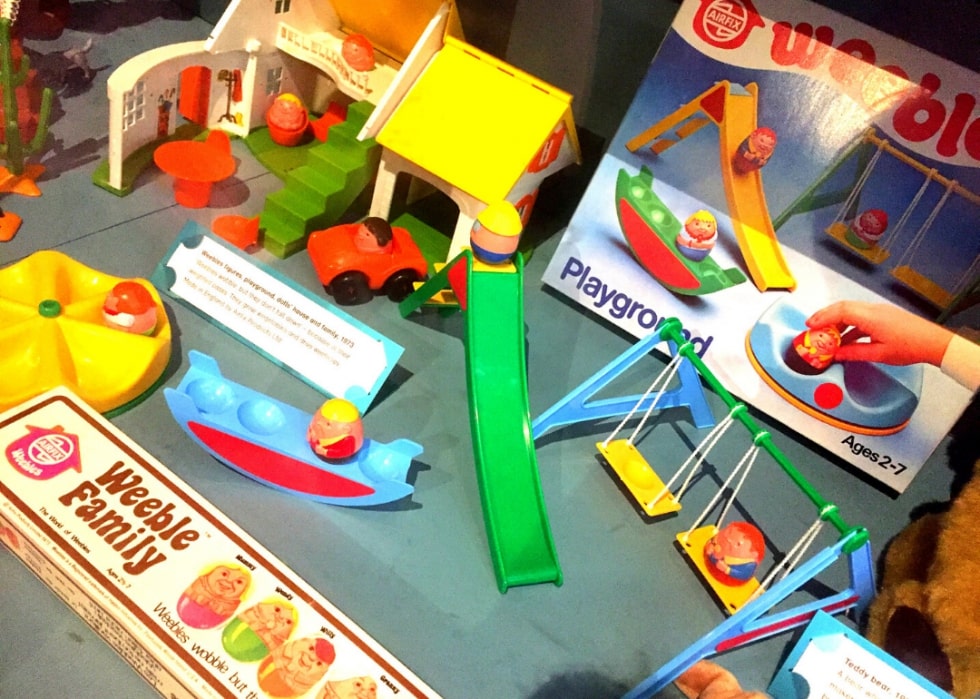
Source: Ben Sutherland/Flickr
Due to their shape, the Weeble Family just could not be knocked down. They featured Mom Weeble, Dad Weeble, and three Weeble siblings. They even had a dog. To go with the characters, you could collect all sorts of playsets, including their house and some special locations like a circus and a haunted house.
Rock 'Em Sock 'Em Robots
Though they came out in the 60s, Rock ‘Em Sock ‘Em Robots remained popular all the way through to the 90s. Of course, kids were more interested in their Super Nintendos and Playstations by then, but these robots could still usually be found lurking in toy chests.
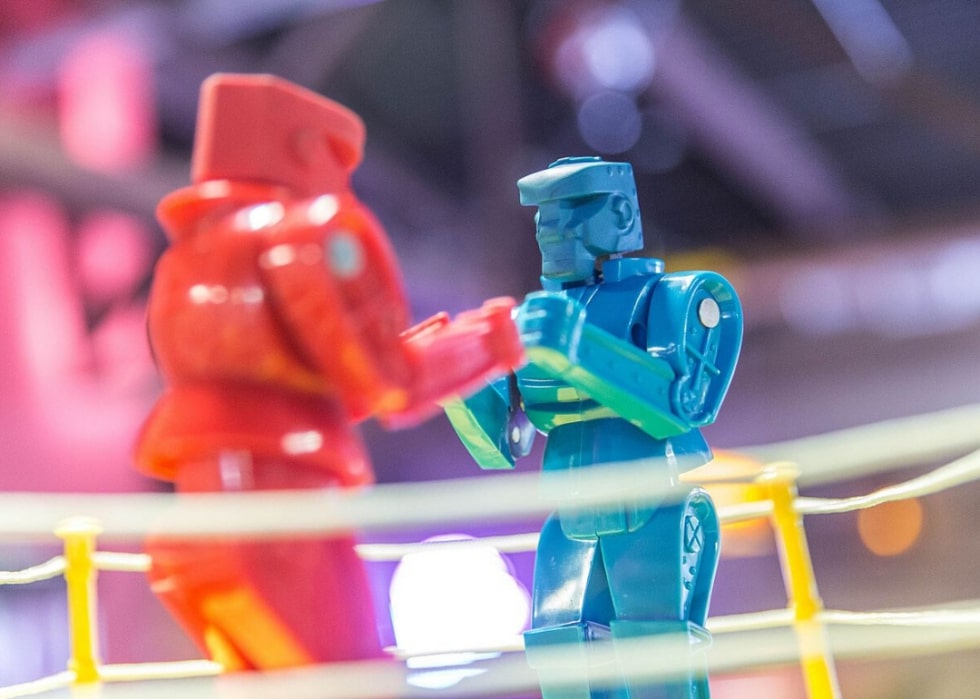
Source: Lorie Shaull/Wikimedia Commons
The toy company responsible for the first fighting robots, Marx, has since closed down. However, Mattel eventually released its own set of spring-loaded Rock ‘Em Sock ‘Em Robots to keep the tradition alive.
Buckets of Slime
Speaking of Mattel, the company was coming up with its own remarkable inventions as far back as the 1940s. Though it’s most famous for Barbie, Mattel was also the first toy company to bring slime to the market.
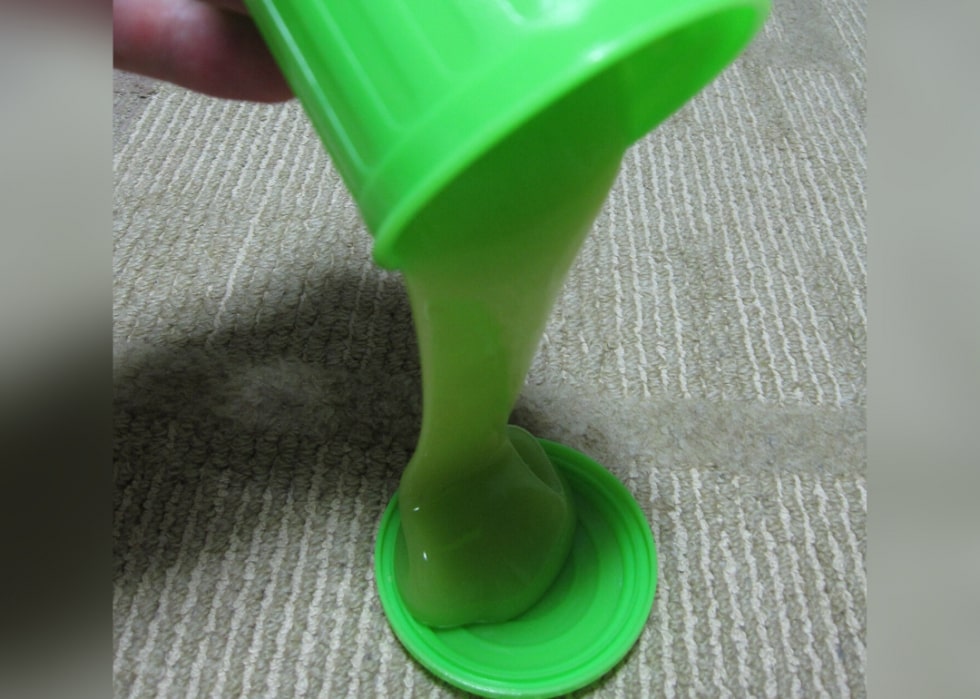
Source: Ciphers/Wikimedia Commons
Released in 1976, Slime was a big hit with kids at the time. The bright green trash can it came packaged in was a big part of the fun. However, it was the texture of Slime that really captivated kids. It was also an important step up from the Goo that was sold in the 60s, which left some poor little ones dealing with folliculitis.
Diaper Time with Baby Alive
Is it just us, or are dolls inherently creepy? This one isn’t as disturbing as Katie Kopycat, but we still can’t imagine why anyone would want a fully functioning fake baby. Still, kids of the 70s swooned for Baby Alive – the doll that ate food, threw it up again, and even soiled its diapers.
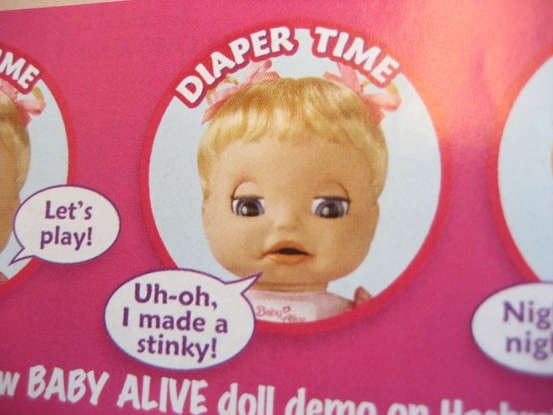
Source: streamishmc/Flickr
Gross though all this may sound, little girls in the 70s all coveted “the doll that eats, drinks, and wets.” Hasbro was responsible for this odd creation, releasing it in 1973. Children entertained themselves for hours, feeding their babies, scolding them, changing them, and cleaning up after them.
Troll Dolls
You’ve probably seen (or at least heard of) the Trolls film franchise, which kicked off in 2016. What you may not have known is that these cute and quirky little creatures were born way back in the 1950s. They originated in Denmark, and it wasn’t until the 70s that they became an international hit.
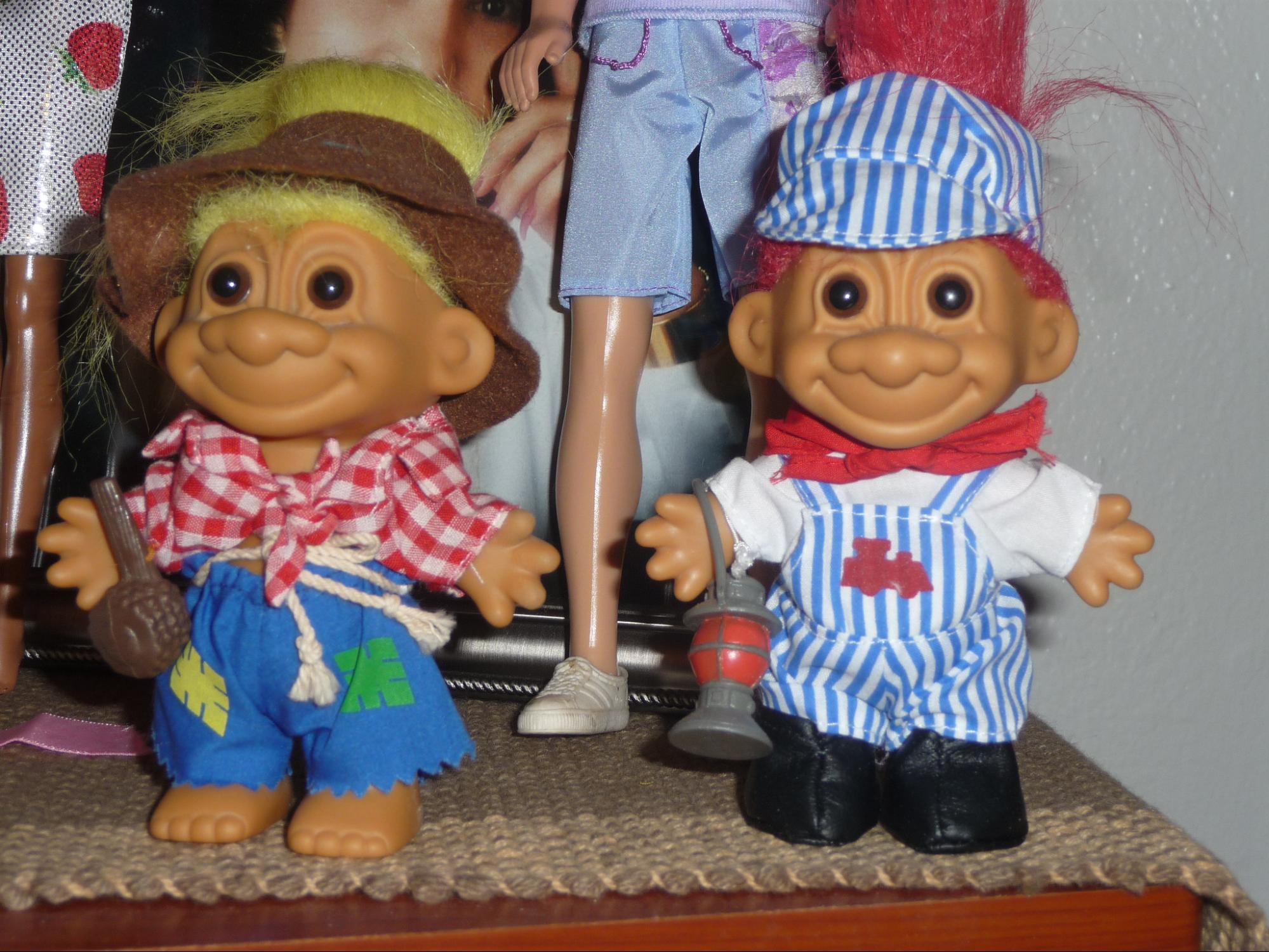
Source: Chester Paul Sgroi/Flickr
Troll dolls were invented by a fellow named Thomas Dam. In the beginning, he marketed them as “Good Luck Trolls,” implying that they could bring good fortune to their owners. Trolls have changed a lot over the years, but the one thing that remains the same is that they are creepy but adorable.
Pet Rocks
Yes, that’s right – 70s kids literally played with rocks. Not only did they play with them, but they paid a company for “pet rocks.” So, when your parents or grandparents complain that you should be more grateful for the amazing things you’ve enjoyed in life, they probably have a point.
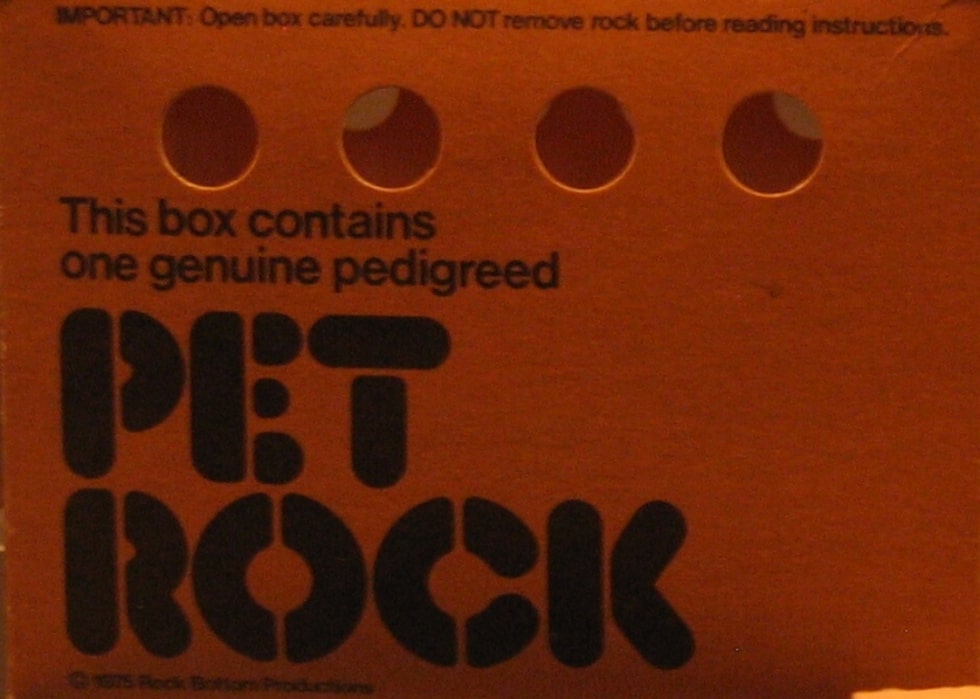
Source: Hempdiddy/Wikimedia Commons
If you’re wondering how on earth someone managed to sell people rocks, the secret lies in clever marketing. Pet rocks were packaged in boxes that looked like they had a real living creature in them, complete with breathing holes and “care and feeding” instructions.
Shrinky Dinks Are Rinky-Dink
They may be “rinky-dink” (aka old-fashioned) now, but these melting, shrinking, plastic wonders were a hit when they were released in 1973. These fun, shrinkable trinkets were invented in Wisconsin and released in 1973. A couple of moms were responsible for the invention, which they concocted for their kids’ Boy Scouts troop.

Source: Dianne Yee/Flickr
Each Shrinky Dink set came with some set designs on polystyrene plastic that you could color in and decorate. Then, you had to get an adult’s help to pop it in the oven at just the right temperature. The plastic would shrink, leaving you with an adorable little collectible.
Putting Stretch Armstrong to the Test
This simple toy came out in 1976, and though each one only cost $11 at the time, it went on to make the Kenner company millions. Stretch Armstrong was made of latex and filled with corn syrup. This odd combo allowed him to stretch up to around four feet wide before he would theatrically snap back into his original form.
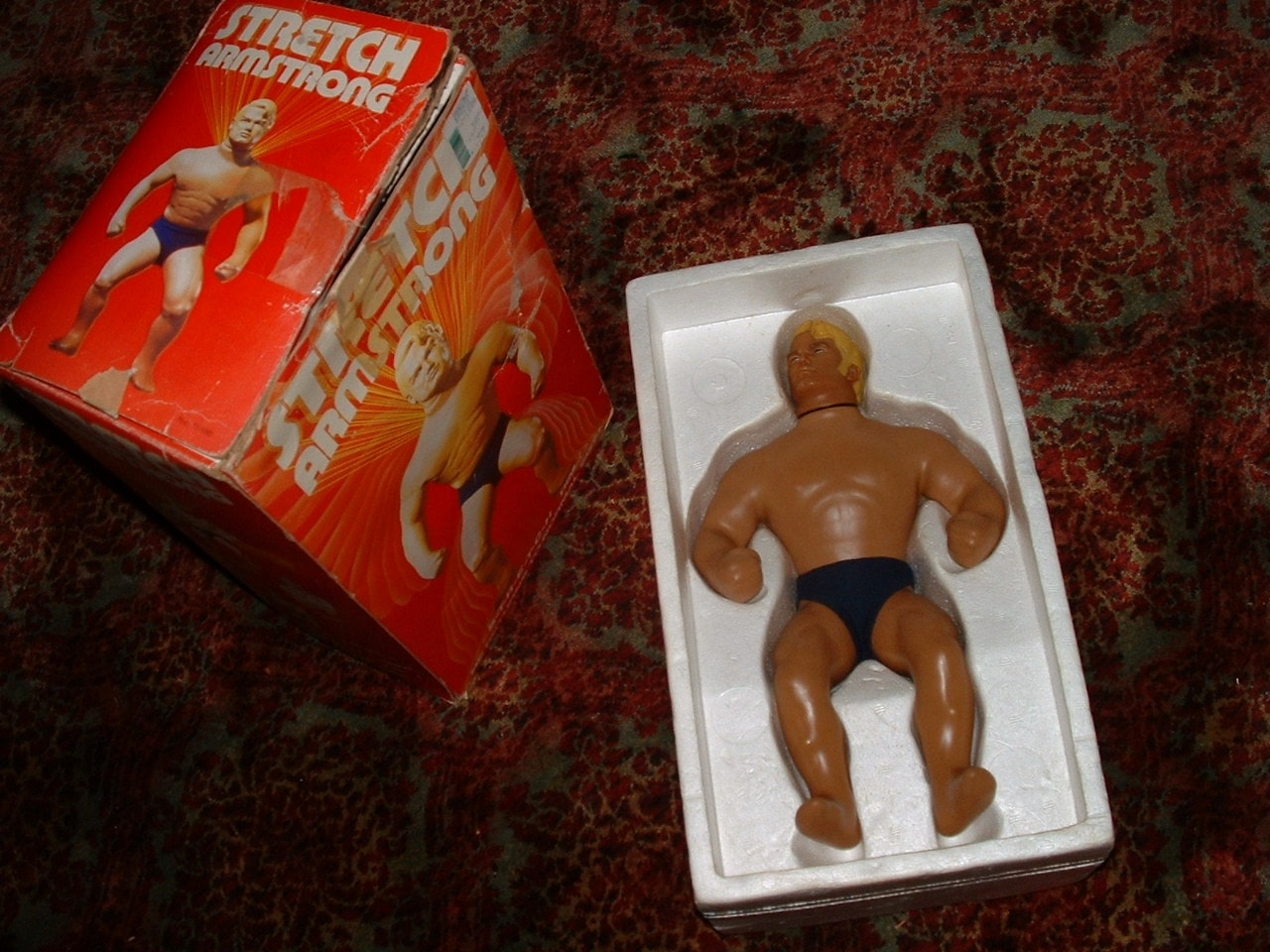
Source: Alex Beattie/Flickr
The stretchy action figure was so popular in the 70s that it has become an icon of the decade. Collectors now pay hundreds and sometimes even thousands of dollars to get their hands on mint-condition Stretch Armstrongs.
Simon Says
Simon was popular among kids in the 70s, but did you know it was also a crowd favorite at the infamous Studio 54? The electronic party game came out in 1978, giving kids and adults hours of fun following the light patterns and memorizing each step.
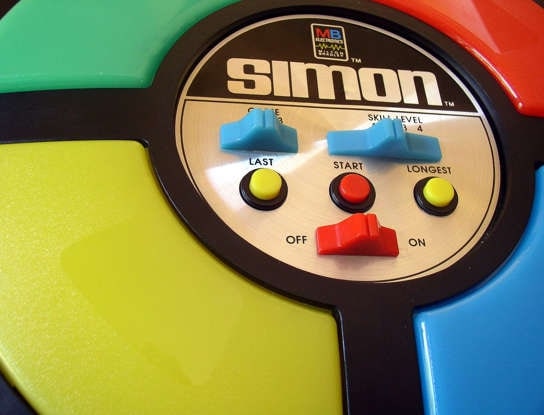
Source: debaird/Flickr
In addition to spending time at Studio 54, Simon was popular during the holiday season, keeping everyone entertained while Thanksgiving and Christmas Dinners were whipped up. Many tried to imitate Simon, but no one ever stole the game’s glory.
The Classic Connect 4
Connect 4 proves that a concept doesn’t have to be complex to take off. While modern gamers do appreciate excellent graphics and immersive environments, we’re willing to bet that even the most hardcore MMORPG fan could get engrossed in a game of Connect 4.
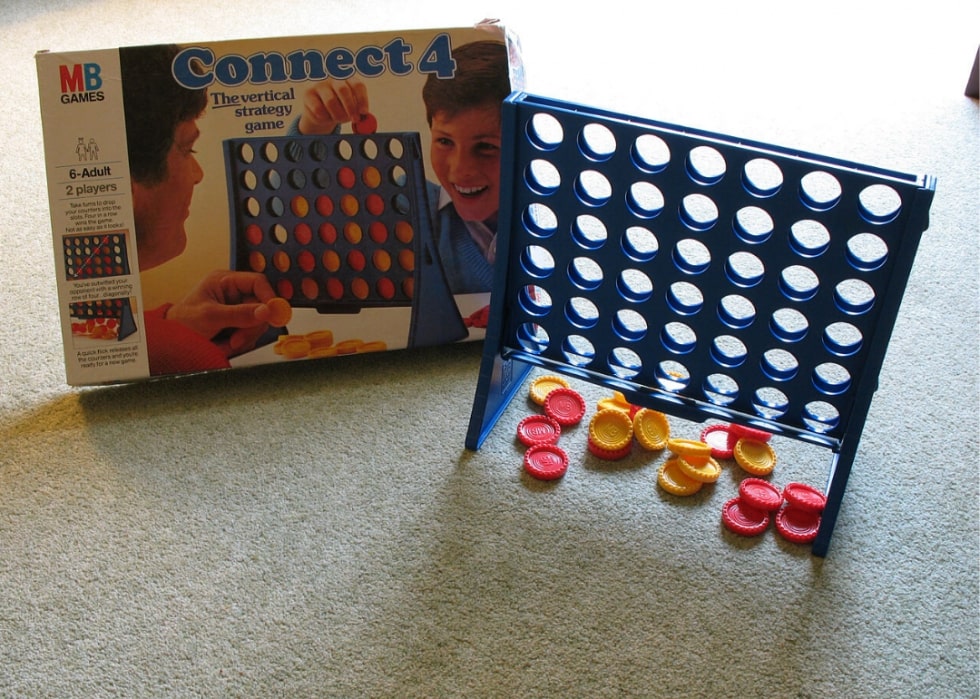
Source: James Petts/Wikimedia Commons
Invented in 1973 by Howard Wexler in 1973, the game was released by Milton Bradley. It took a few years before it developed the fame it has today, but eventually, it became a global hit. You can now find it everywhere from attics in America to backpacker bars in Thailand.
“High-Tech” Battleship
Believe it or not, this Battleship game was considered pretty high-tech by 70s kids. They had, after all, been playing Battleship with paper and pencils up until that time. Regardless of the tech level of your Battleship game, the object remains the same: sink all your opponent’s ships before they sink yours.
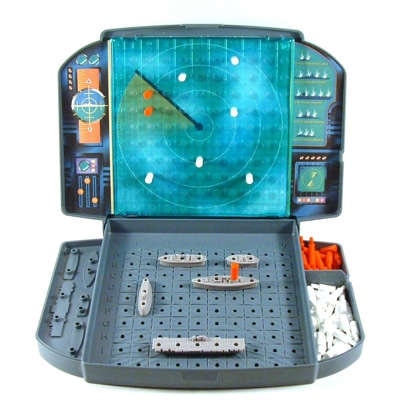
Source: jking89/Flickr
Did you know that an early version of Battleship was played by soldiers seeking to entertain themselves between skirmishes in World War I? Indeed, the old-school paper-and-pen version of the game dates back to 1900, perhaps even earlier.
Nerf Balls
The whole Nerf concept has evolved greatly since the release of the first Nerf ball in 1969. We have Parker Brothers to thank for “the world’s first indoor ball,” which was made of polyurethane foam. By 1972, Nerf had truly taken off, with the Nerf football released that year.
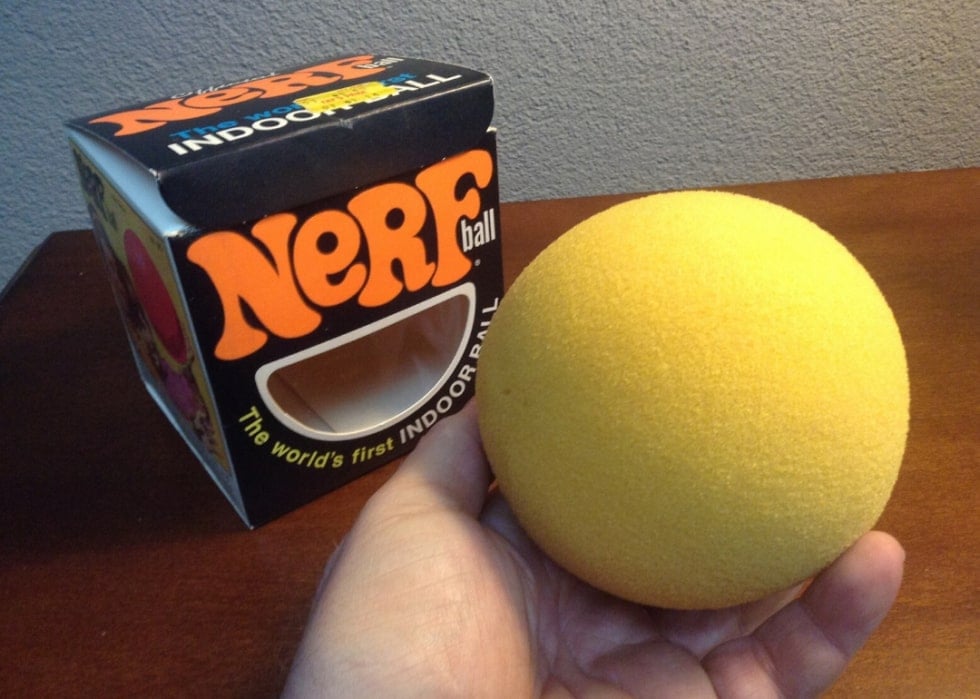
Source: Mike Mozart/Flickr
Soft, squishy, and unable to damage anything they hit, these balls were a hit among kids and adults alike. Children could finally play rough in the house without inspiring the ire of their parents.
Star Wars Stuff
Star Wars is perhaps the most famous set of films to arise from the 70s. Still popular today, this epic space opera series transformed the lives of many kids in the 70s. Since the popularity of the franchise has never wavered, original action figures from the 70s are now some of the most valuable collector’s items on the market.

Source: kalupa/Flickr
Whether you have Luke Skywalker, R2-D2, Obi-Wan Kenobi, Han Solo, Darth Vader, or any of the other beloved characters, you can expect to see their value skyrocket if they’re from the 70s and in good condition. If you have one in its original packaging, you’re sitting on a gold mine.
The Six Million Dollar Man
If you were born in the 80s, 90s, or 2000s, you may not be familiar with the Six Million Dollar Man. However, if you were a child of the 70s, this action figure will give you plenty of nostalgic vibes.
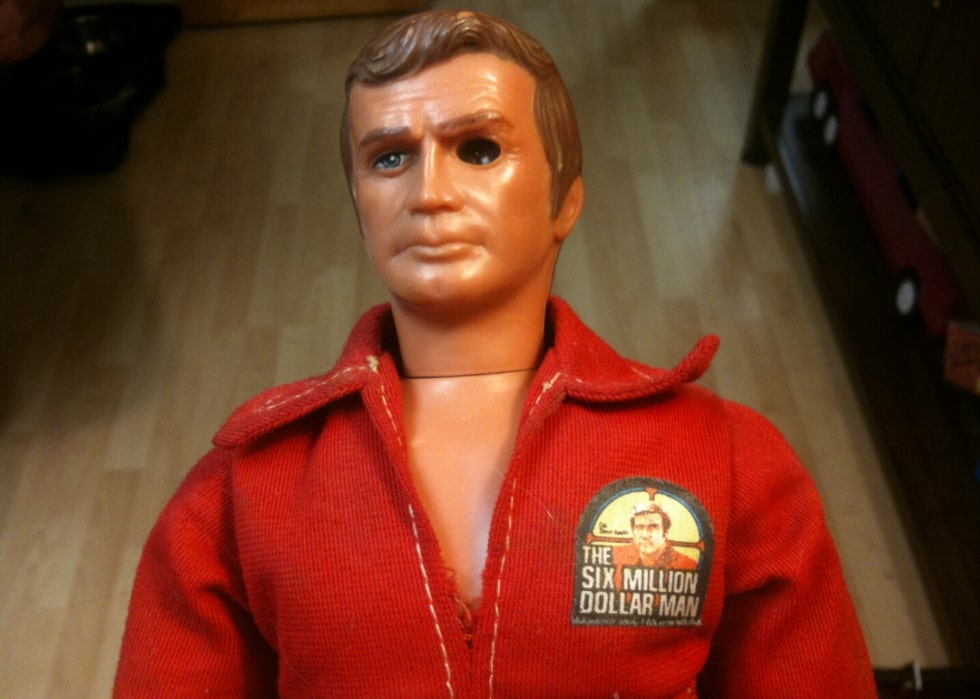
Source: Mike Mozart/Flickr
The Six Million Dollar Man was a popular TV series that first aired in 1973. The story revolves around Steve Austin, an astronaut who is gravely injured in a crash but is then rebuilt to be an unstoppable force. The show inspired an action figure, which came complete with a bionic eye and incredible heavy-lifting capabilities.
The Magna Doodle
This magnetic drawing toy was released in 1974, and it was a popular choice for parents due to the fact that anyone could safely play with it. Babies could have fun twisting and turning the nobs, while older kids could get deeply involved in drawing pictures and creating designs.
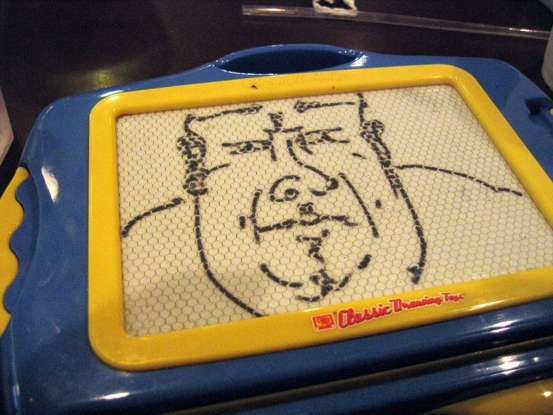
Source: Olaf Gradin/Flickr
Even adults could get hours of fun from the Magna Doodle, creating complex patterns and pictures like the one shown above. Of course, the Magna Doodle was a version of a perhaps more famous toy that had been invented earlier.
The Etch-a-Sketch
Yes, the Etch-a-Sketch was the original magnetic drawing toy, invented in 1960, which incidentally was the peak of the Baby Boom. While it was first released to Boomers when they were still babies, the Etch-a-Sketch maintained its appeal for decades. It even enjoyed a cameo in the Toy Story series.
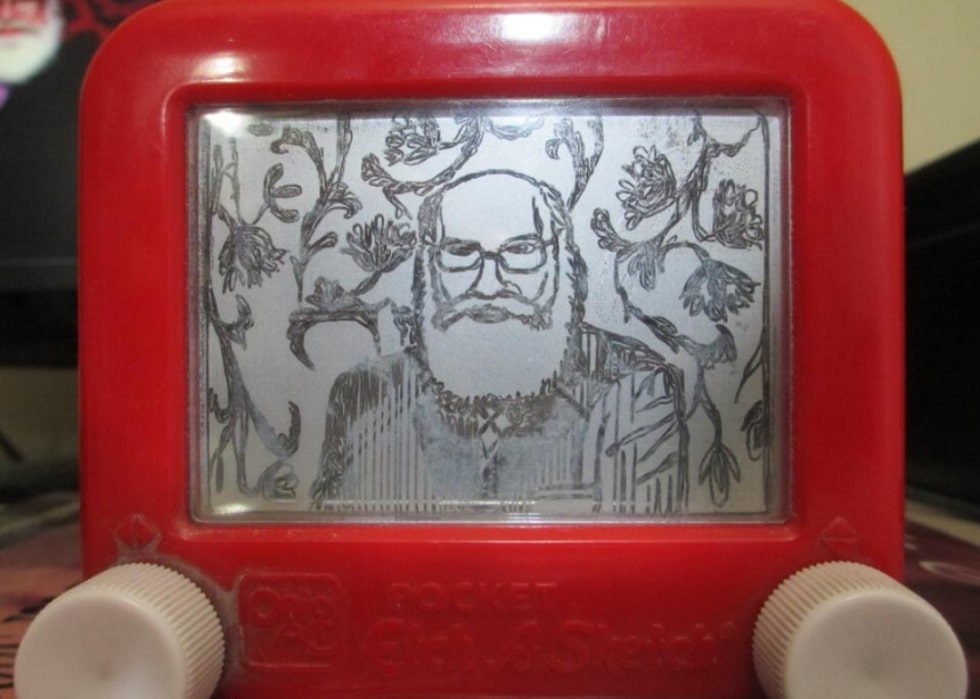
Source: Ieatflower/Wikimedia Commons
The toy contains aluminum powder which the user can move and craft into images by twisting the nobs, which control magnets. Surprisingly, modern versions of the toy are almost identical to the originals, proving the old adage that “if it ain’t broke, there’s no need to fix it.”
Bright Kids Loved the Lite-Brite
The Lite-Brite was another Hasbro invention. Though it was first released in 1967, it was in the 70s that this creative toy truly took off. Each Lite-Brite features a simple grid with backlights behind it. You cover the grid with a black sheet of paper and then push colored pegs into it to create different patterns and pictures.

Source: afteravedon/Flickr
Kids could follow patterns or create their own designs, and when they were ready, they could turn the backlight on to make the colored pegs glow. The black paper would ensure only the pegs lit up, turning this toy into a glowing work of art.
Learning with the Speak & Spell
While most modern kids have tablets and similar devices to play with, 70s kids had to make do with the Speak & Spell. Of course, they had no idea this toy was low-tech at the time. It’s only in retrospect that we see how far we’ve come.
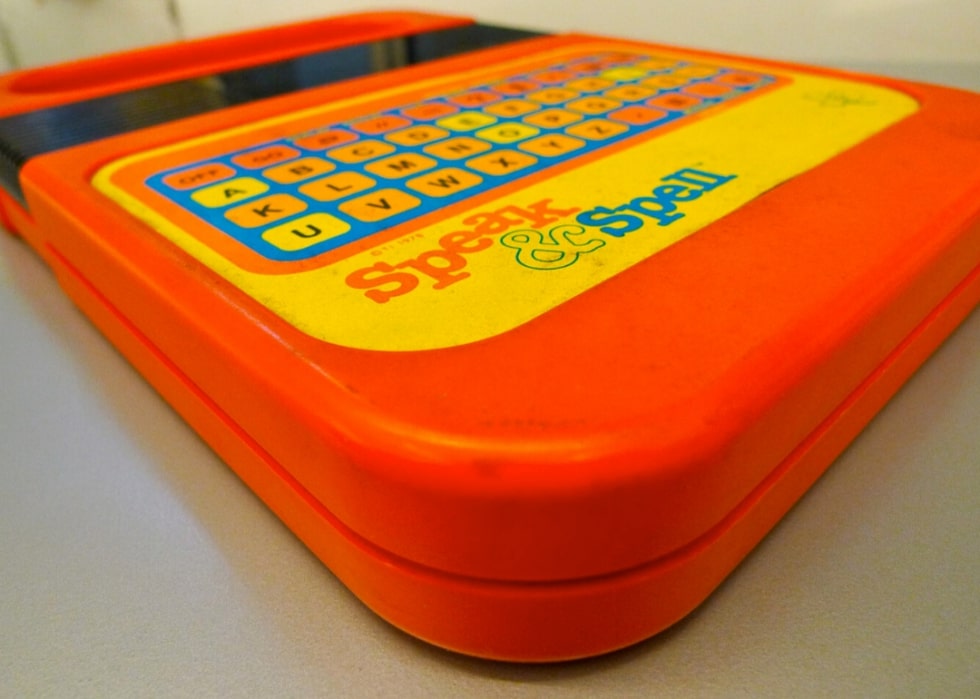
Source: Yusuf C/Flickr
The Speak & Spell came out in 1978 and was marketed as an educational toy that gave children hours of fun while teaching them to spell. It featured a pre-programmed library of words, with a focus on ones that were commonly misspelled.
Hungry Hungry Hippos
Did you know Hungry Hungry Hippos was originally created in Japan? A guy named Fred Kroll bought the rights to the game in the mid-70s and then released it in the United States. Knowing a good thing when they saw it, Milton Bradley soon bought the rights from Kroll.
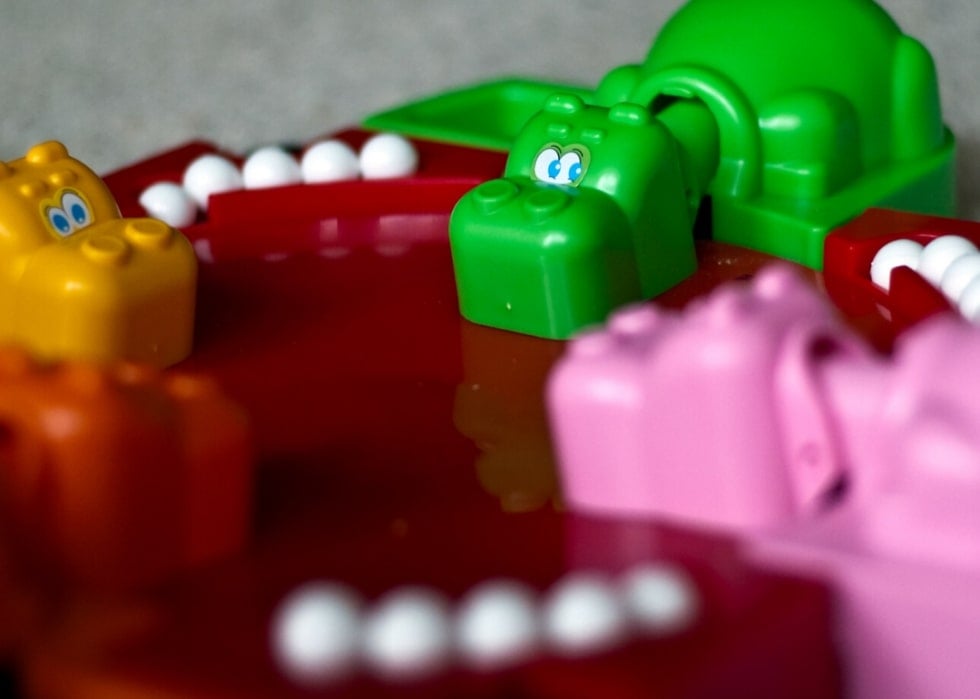
Source: David Goehring/Flickr
The design of Hungry Hungry Hippos has evolved over the years, but the aim of the game remains the same. Players must use their hippos to collect as many of the marbles as they can. Whoever’s hippo eats the most is the winner.
The Uno Card Game
Who knew this globally popular game was a product of the 70s? Released in 1971, the game was developed by a Cincinnati resident named Merle Robbins. At first, Merle made it to play with friends and family. However, when he saw how much people took to the game, he had 5,000 copies printed and began selling them from his barber shop.

Source: Wikimedia commons
From there, the game garnered a strong word-of-mouth reputation. People clamored to get their hands on it. But it was when K-Mart began stocking it that the addictive card game truly took off. Nowadays, it can be found everywhere, from Japan to Australia.
Mastermind – The Board Game
Mastermind is yet another classic game to have its origin in the 70s. Released in 1973, the board game is still popular today. Indeed, it has inspired a whole host of spin-offs and variations.

Source: ZeroOne/Wikimedia commons
The beauty of Mastermind was that it was suitable for small families, as you could have plenty of fun with just two players. Every 70s kid who had a Mastermind board will probably still be able to tell you about their strategies for success.
Anything Starsky & Hutch
This iconic TV show was wildly popular in the 70s, and any show or movie that gained enough popularity would inspire a set of toys. This meant kids at the time were soon treated to toy versions of the famous red car from Starsky & Hutch.
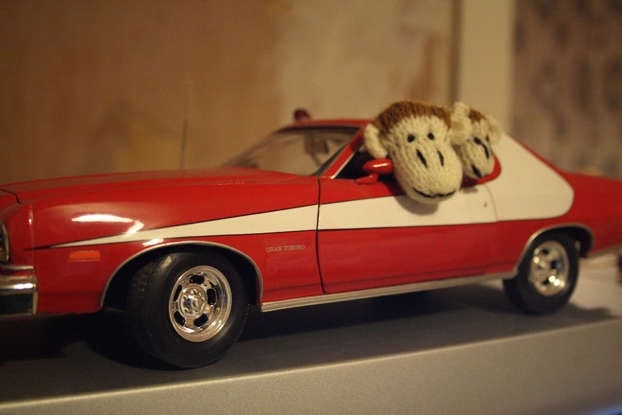
Source: Heather R/Flickr
The two stars of this buddy-cop TV show – Paul Michael Glaser and David Soul – drove around in an eye-catching red Gran Torino. After the show’s debut in 1975, kids were keen to get their hands on their very own miniature version of the car. Thankfully, they didn’t have to wait long.
Everything Evel Knievel
Evel Knievel was another iconic 70s figure, which meant he had to have his own set of toys. Kids from the 70s could play with Even Knievel action figures and stunt car sets. The popularity of these toys has never diminished, and they are now valuable collector’s items.
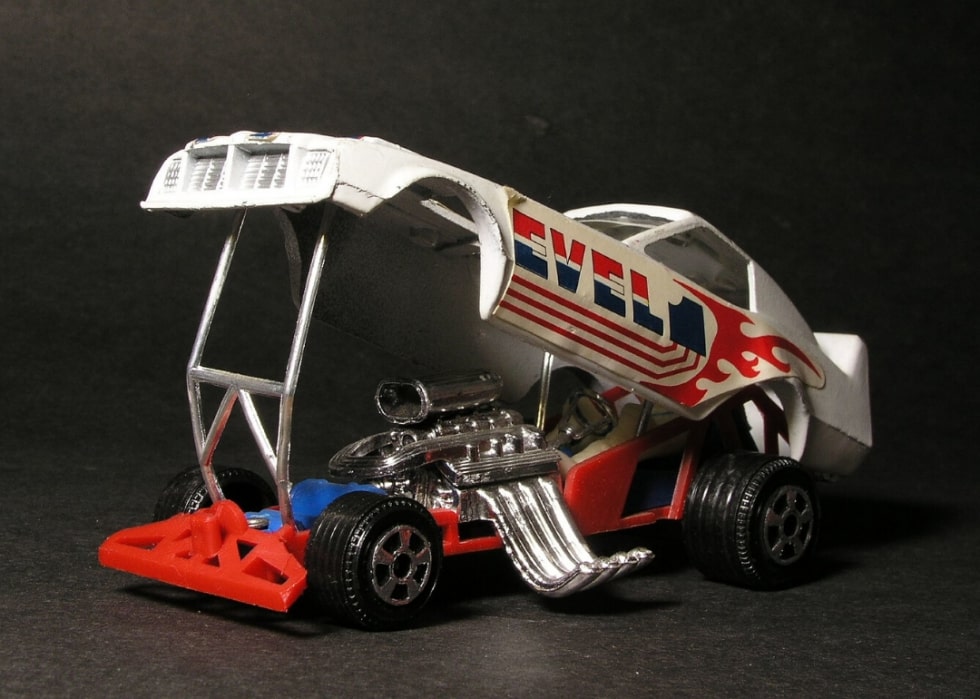
Source: Joe Wu/Flickr
The 70s were huge for Knievel, who famously launched his car into the air at spots like Madison Square Garden and the Los Angeles Coliseum. Though he didn’t have the success he sought at Snake River Canyon, even his failures were exciting.
Sonny & Cher Action Figures
Cher is still a pop icon to this day. However, many of her newer fans don’t know much about her first husband, Sonny. Before Cher became the “Goddess of Pop,” she was in a folk duo with Sonny. The two enjoyed plenty of success, but their relationship was tumultuous.
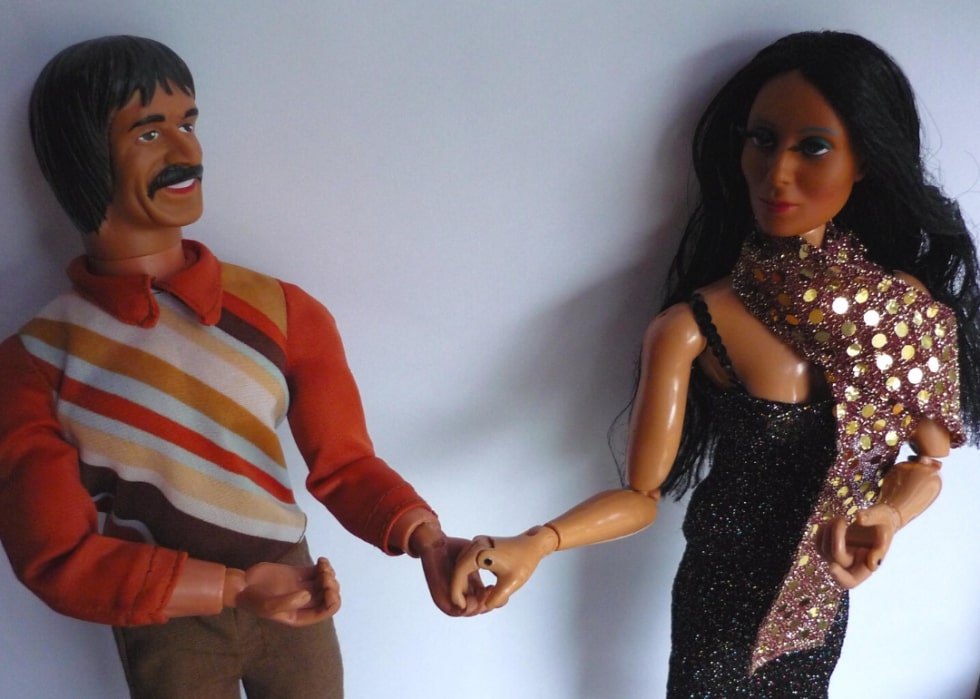
Source: Nata Luna Sans/Flickr
Oblivious to the behind-the-scenes drama, kids of the 70s adored The Sonny & Cher Comedy Hour. They played with Cher and Sonny dolls, dressing them up in fun outfits. Cher’s sassy attitude, unique style, and incredible talent helped her rise above everything that threatened to keep her down, and since the 70s, she has cemented her place in music history.
Drawing with a Spirograph
This simple yet marvelously creative geometric drawing tool was invented by a French mathematician in 1881. While it got its start in the world of mathematics, by the 1960s, it was transformed into a toy and marketed to children. With “a million marvelous patterns” to create, the toy took off.
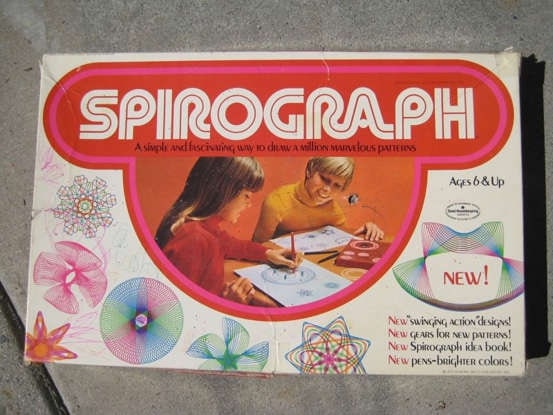
Source: Jderuna/Flickr
Offering a unique way to draw and create patterns to color in, the Spirograph was a huge hit in the 70s. Kids used it to create psychedelic patterns reminiscent of Buddhist mandalas.
The Famous Rubik’s Cube
No list of 70s toys could be complete without mention of the famous Rubik’s cube. This colorful cube-shaped puzzle can be arranged into a staggering 43 quintillion unique variations. However, the general goal is to mix it up and then return it to its starting block pattern.
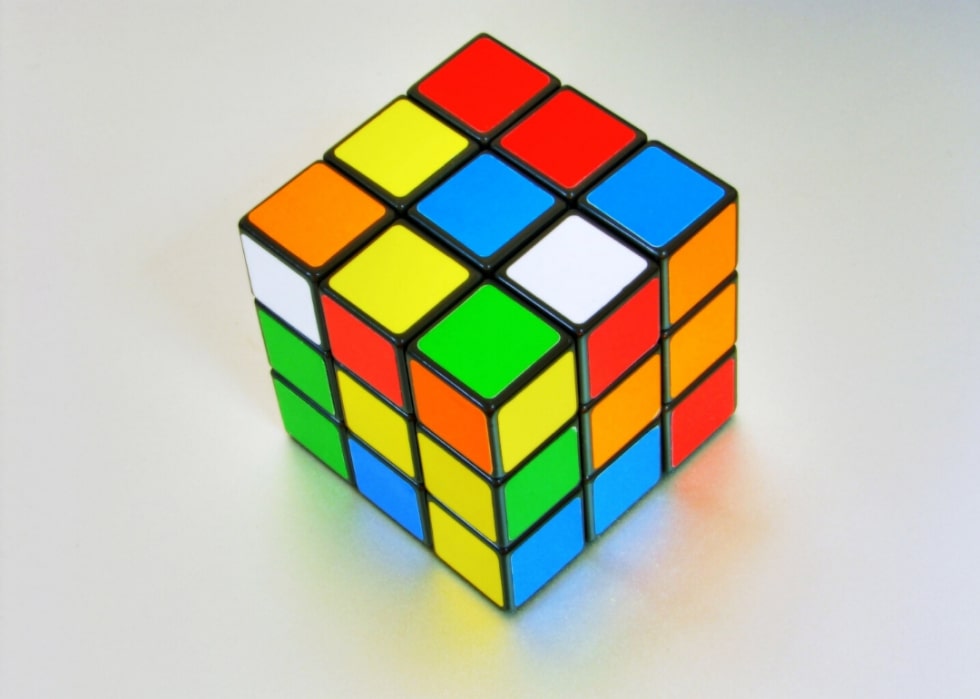
Source: JiahuiH/Flickr
The deceptively simple toy takes its name from its inventor, Erno Rubik, who came up with the toy in 1974. He created it as a way to explain 3D geometry to kids. We wonder how he would feel if he knew that we secretly moved the stickers when we were kids to solve it!
Retro Skateboards Before They Were Retro
You know those small, colorful plastic skateboards that gained popularity in the 2000s thanks to their retro aesthetic? Well, they weren’t considered “retro” in the 70s – they were the latest, greatest thing for kids to collect.

Source: Pixnio
Invented by Frank Nasworthy, these skateboards were an upgrade to the clunkier models available in the 50s and 60s. Nasworthy used urethane for the wheels and sold the skateboards under the brand Cadillac Wheels. Of course, copycats soon followed suit, which isn’t a bad thing because it inspired the rise of skateboarding as a legitimate sport.
Pong – One of the Earliest Video Games
If you love playing Minecraft or Fortnite, it’s worth knowing that these games share a common origin: Pong. Invented by Atari, Pong was the first video game to gain commercial success. This may seem crazy to modern kids since all you do in the game is bat a digital ball back and forth with pixelated paddles.
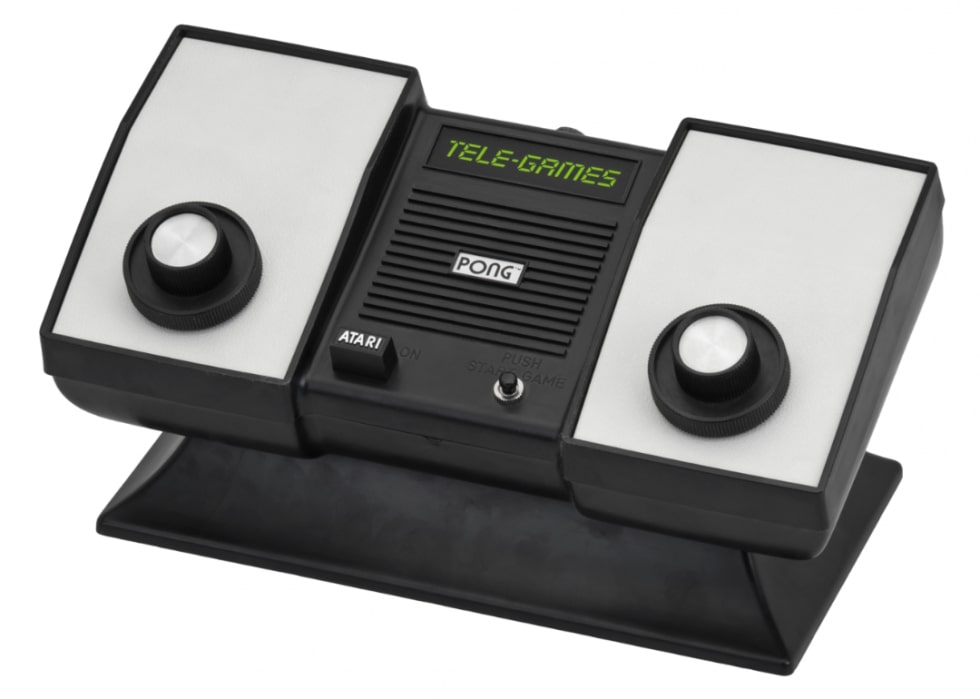
Source: Evan-Amos/Wikimedia Commons
Pong came out in the summer of 1972, and if you had a Pong console, you were definitely one of the cool kids. By 1974, Atari had sold around 8,000 consoles. However, it’s important to remember that the video game market was not even a thing yet.
The First Football Video Game
One of the first hand-held electronic games, this Classic Football mini-console was a precursor to popular classics like the Gameboy. Released by Mattel in 1977, the game itself was simple. Its true value lies in the gaming legacy that flowed after it.
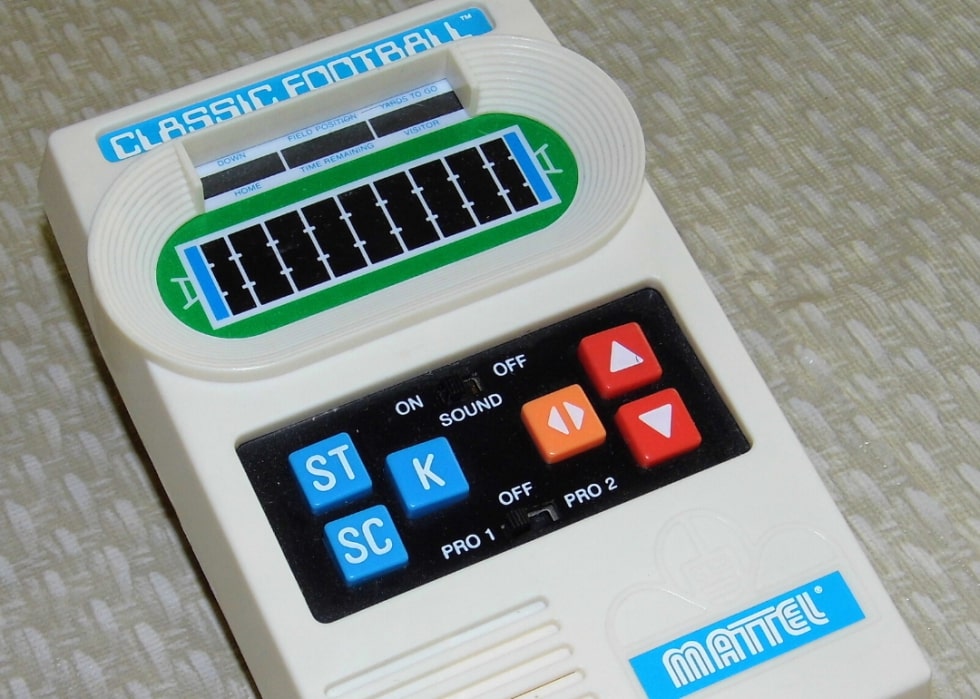
Source: Joe Haupt/Wikimedia Commons
Inspired by the popularity of other retro toys, Mattel re-released the game in 2000. Of course, it didn’t enjoy much success since we were all engrossed in The Sims, Counterstrike, and Tony Hawk at the time.
The Atari 2600
Building on the popularity of Pong, Atari released the Atari 2600 console in 1977. This updated gaming system allowed users to play more than just one simple game. Instead, you could choose from a whole library of titles.
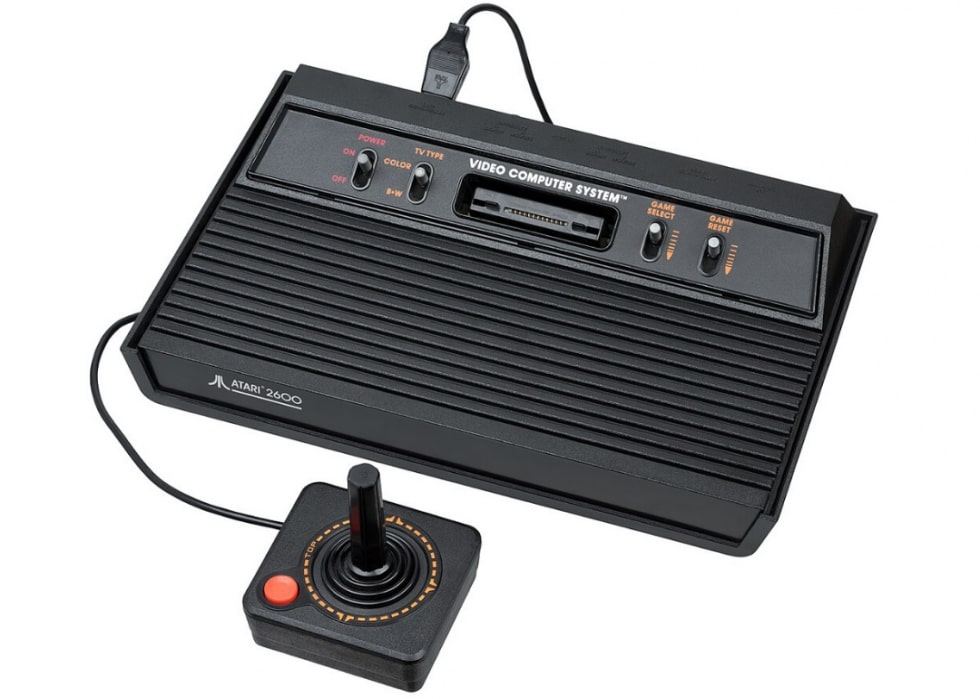
Source: Evan-Amos/Wikimedia Commons
The Atari 2600 ran on cartridges, much like the early Nintendo systems that followed after it in the early 80s. Players could enjoy everything from Blackjack to Star Ship, Street Racer to Video Olympics. While such games may not entice modern players, they were the catalyst for the expansion of the gaming market.
Old-School Games like Boggle
While video games were among the more exciting developments in the 70s, board games were also wildly popular. Considered “old-school” by today’s standards, dice games like Boggle were cutting-edge for kids in the 70s.
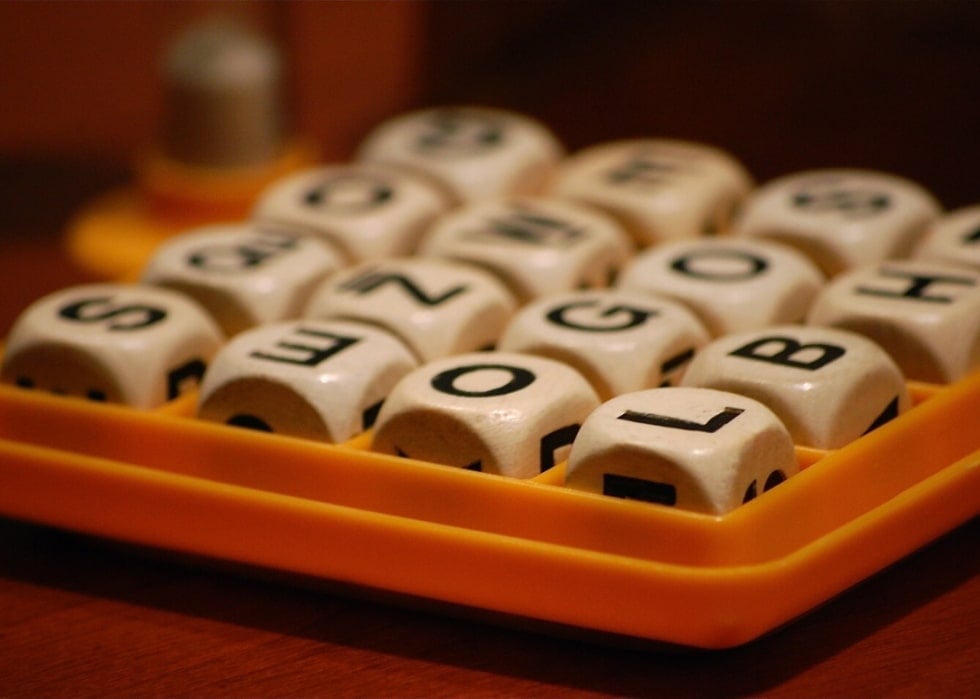
Source: Rich Brooks/Flickr
Invented by Allan Turnoff and released by Parker Brothers in 1972, Boggle is a timed word game that centers around dice with letters on them. Players are given three minutes to come up with as many words as they can from the dice positioned in the grid.
Ants in the Pants
Another board game to gain popularity in the 70s, Ants in the Pants was a great way to keep little ones entertained. The goal of the game was simple: Be the first to jump all your ants into the big plastic pair of pants.
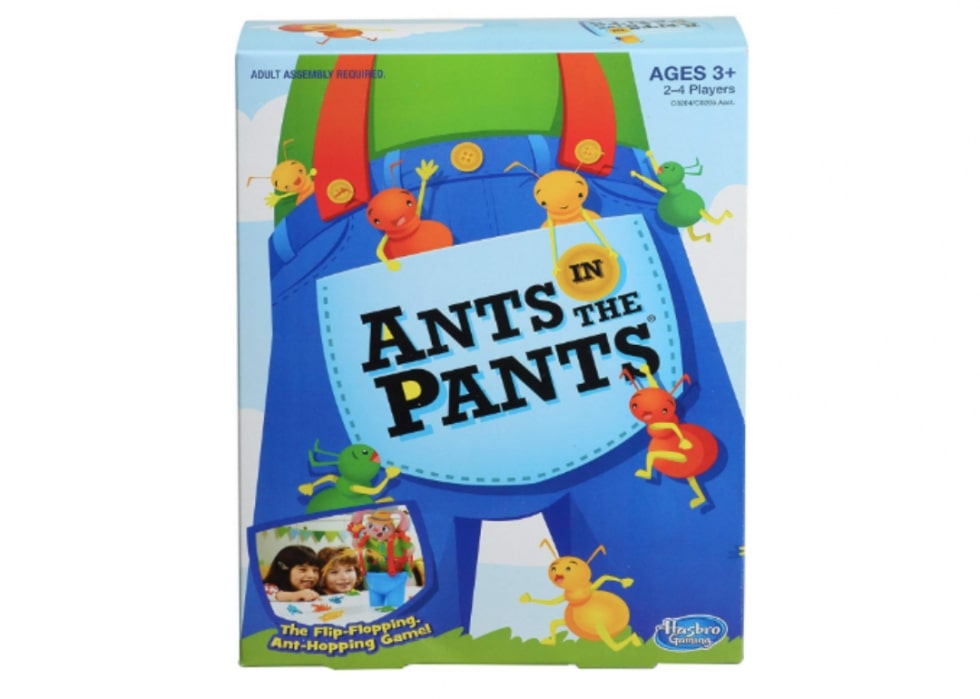
Source: Hasbro Gaming
Though it may seem a little ridiculous, games like this are great for developing hand-eye coordination and fine motor skills. Manufactured by Milton Bradley (which has since been bought by Hasbro), the game can still be found in toy stores to this day.
Space Hoppers
In 1971, the most coveted Christmas gift was a Space Hopper. These bright and bouncy balls were all the rage, with kids happily leaping all around their gardens and through their neighborhoods. Ask any child of the 70s, and they’ll probably tell you they can still recall the rubbery smell of their beloved Space Hopper.
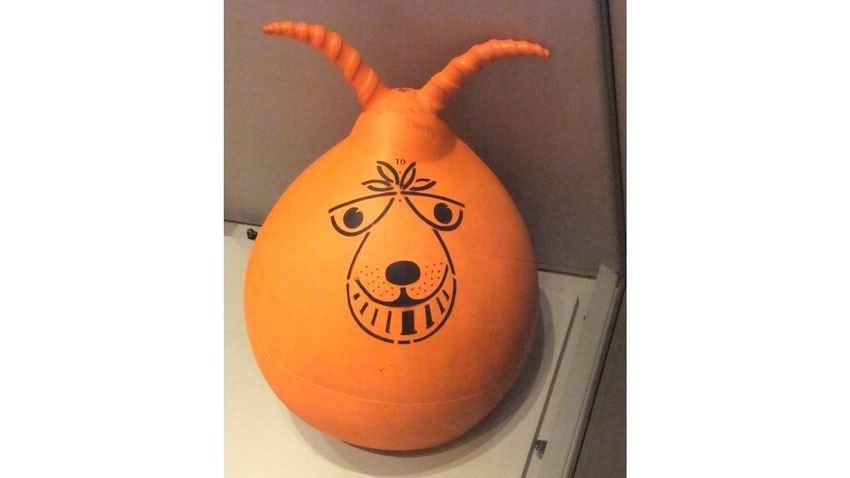
Source: yours.co.uk
Many variants of the toy have been released over the years, providing that it truly is a timeless invention. Who could resist bouncing around on your very own whimsical, ball-shaped creature?
Walkie Talkies
Here’s another invention that has stood the test of time. What kid wouldn’t want to play with a set of walkie talkies? This is the kind of toy that can probably even drag modern youngsters away from their tablets and their Minecraft biomes. After all, a set of walkie talkies can make you feel like a real-life secret agent.
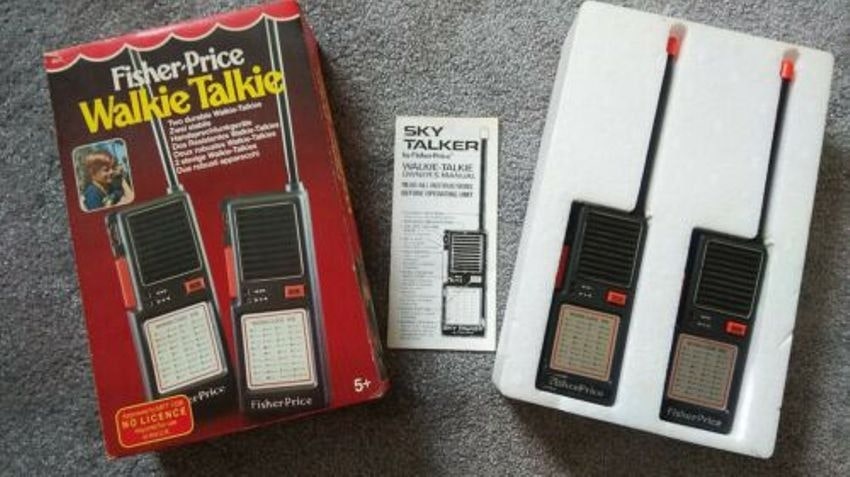
Source: ebay.co.uk
Any kid lucky enough to have a set of walkie talkies in the 70s was the king of the street. Everyone would want to play with you, and you’d get to dictate whose turn it was to hold the devices and deliver the secret messages.
Lego Sets
LEGO is one of the oldest toys, originating in the 1950s. However, it was in the 70s that LEGO sets began to take off. During this decade, all sorts of new sets were released, allowing kids to create mini worlds in their bedrooms.
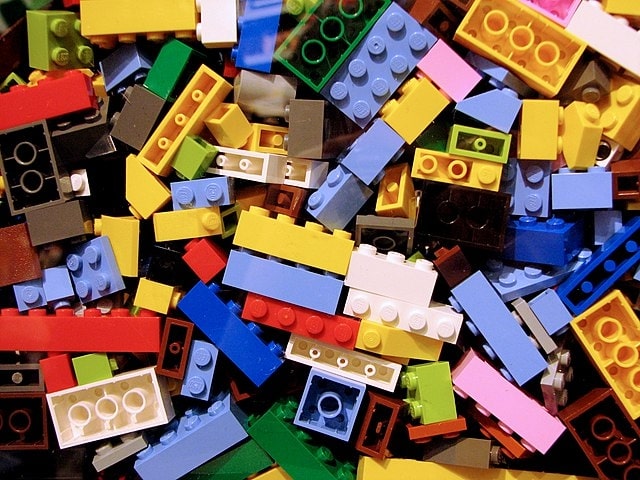
Source: Benjamin D. Esham/Wikimedia commons
If kept in good condition with all pieces present and accounted for, LEGO sets from the 70s can be valuable collector’s items. Indeed, some sets and figurines sell for thousands of dollars online.
